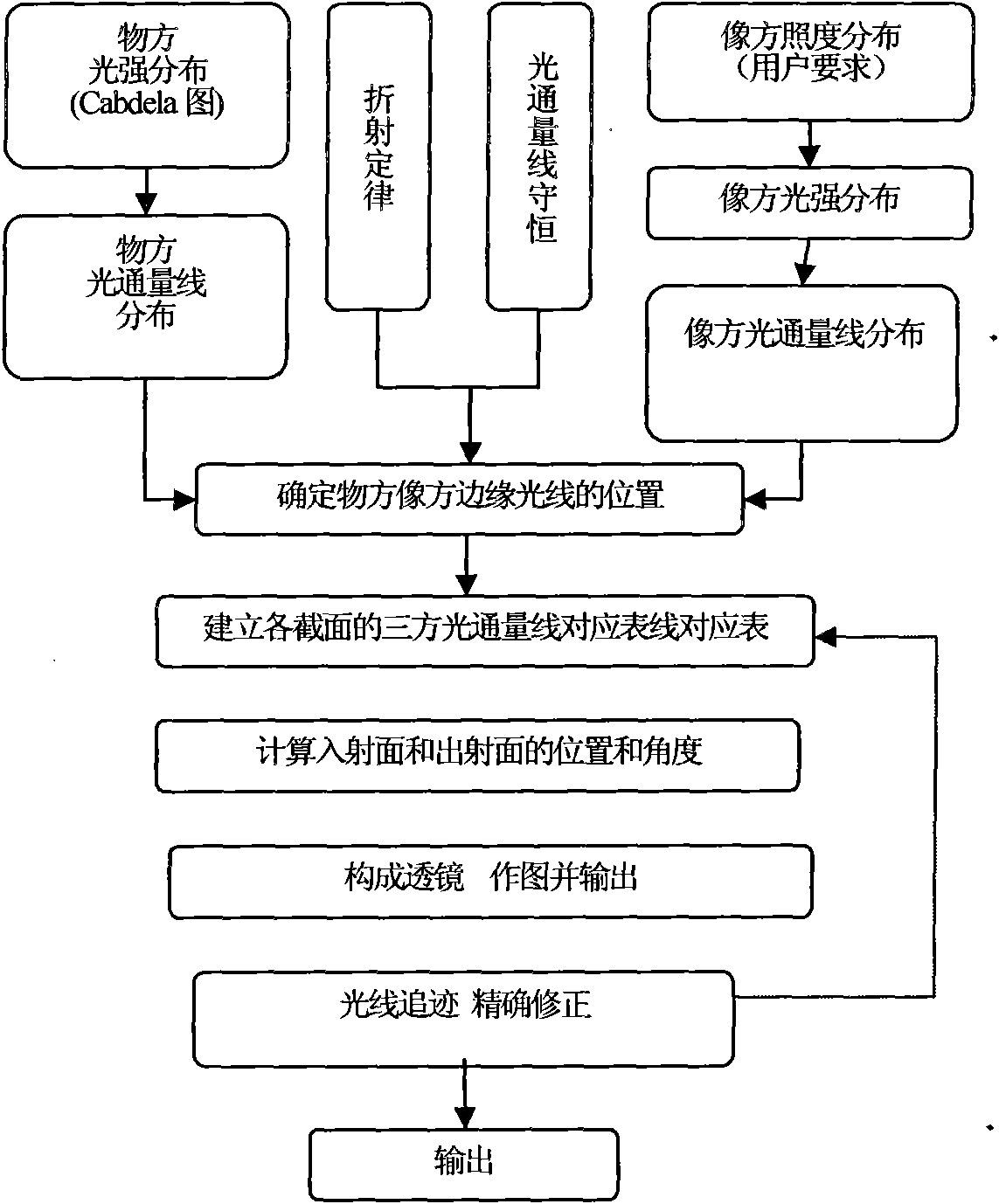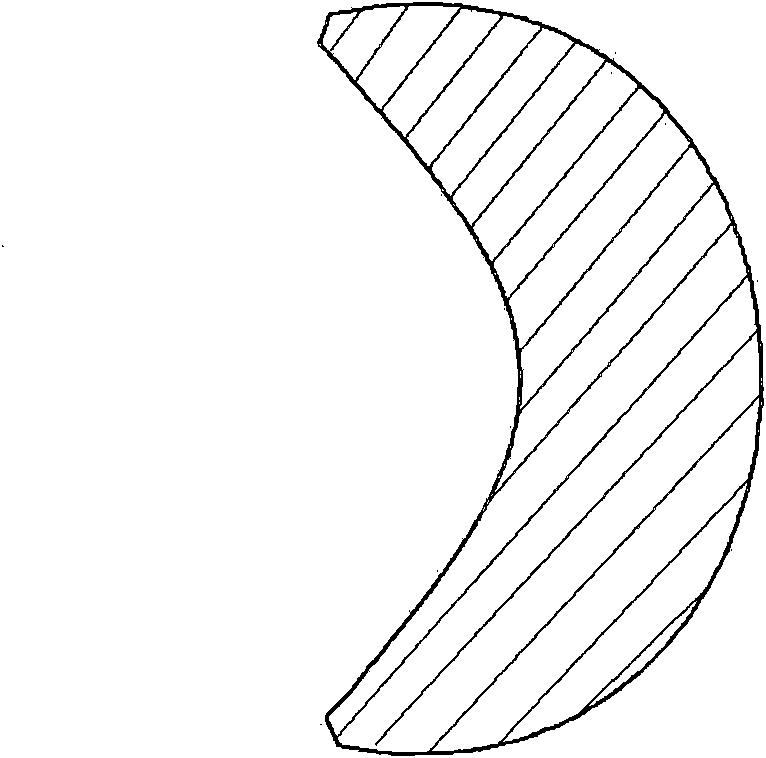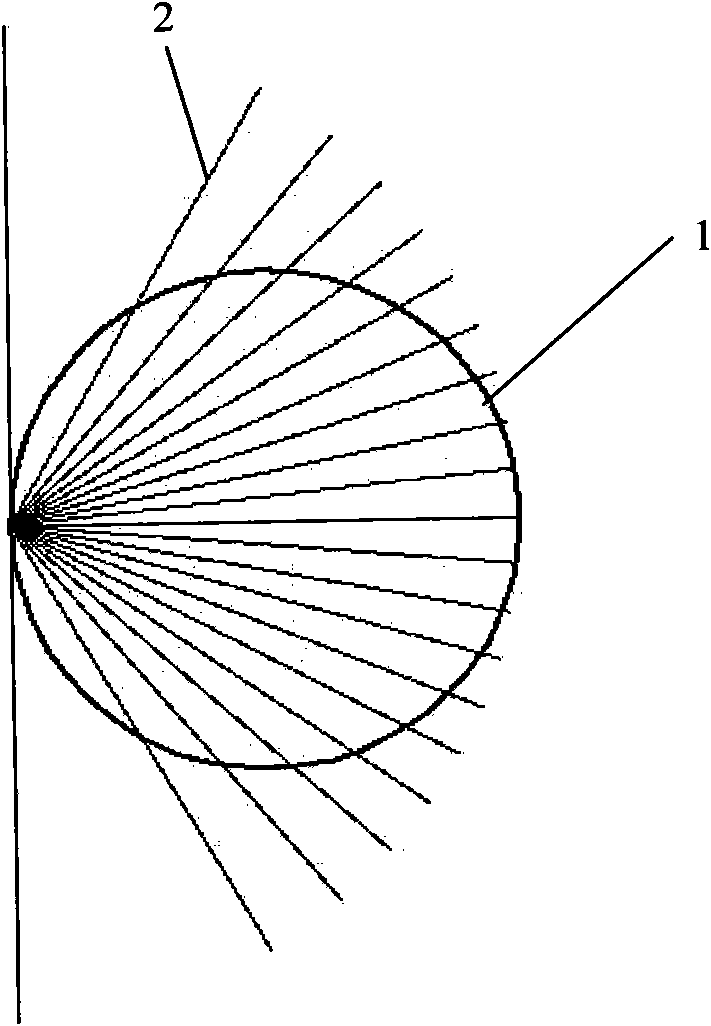Design method of non-imaging optical element
A technology of non-imaging optics and design methods, applied in optical components, optics, instruments, etc., can solve problems such as difficulty, method popularization, complex mathematical problems, etc.
- Summary
- Abstract
- Description
- Claims
- Application Information
AI Technical Summary
Problems solved by technology
Method used
Image
Examples
Embodiment Construction
[0050] figure 1 In the flow chart of the design method of the present invention shown, the side of the LED as the light source is called the object side, and the illuminated side is called the image side. The luminous intensity distribution diagram (ie Cabdela diagram) of the known object space is converted into a luminous flux line distribution diagram. The illuminance distribution of the image side is determined according to the user's requirements, and the illuminance distribution is converted into a light intensity distribution map, and then converted into a luminous flux line distribution map. The problem to be solved by the present invention is to use the law of refraction or reflection to obtain the intermediate optical element between the object space and the image space according to the law of conservation of luminous flux, that is, an optical lens or a mirror. The first step is to determine the angles θa and θb of the edge rays of the object space, and the angles of...
PUM
 Login to View More
Login to View More Abstract
Description
Claims
Application Information
 Login to View More
Login to View More - R&D
- Intellectual Property
- Life Sciences
- Materials
- Tech Scout
- Unparalleled Data Quality
- Higher Quality Content
- 60% Fewer Hallucinations
Browse by: Latest US Patents, China's latest patents, Technical Efficacy Thesaurus, Application Domain, Technology Topic, Popular Technical Reports.
© 2025 PatSnap. All rights reserved.Legal|Privacy policy|Modern Slavery Act Transparency Statement|Sitemap|About US| Contact US: help@patsnap.com



